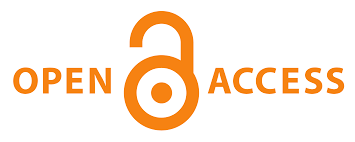An Error Analysis of Students’ Translation In Narrative Text
Main Article Content
Icha Rauzatul Jannah
Cut Yenni
Taufikur Rahmi
Alimnur Alimnur
This research was conducted based on the fact that most students still made many errors in coveying the meaning from Indonesian to English language. Lack of vocabularies, facing an ambiguity from Indonesian to English, word, phrase, and sentence. Therefore, the purposes of this research are (1) to find out types of errors made by students in translating narrative text and (2) to find out the causes of errors made by the students. The design applied in this research was qualitative in type of case study. Meanwhile, the techniques of data collection were documentation and interview. Nine students were considered purposively as subject categorized into high, middle, and low levels. The technique of analyzing data of this research consisted of data condensation, data display, and conclusion/ verification which was found in Miles and Huberman, and Saldana’s model. The result of this research found that (1) there were four types of errors made by the eleventh grade students, namely: omission, additions in simple addition, misformation in regularization and alternating form, and the last one missordering. The highest percentage was misformation. The second was omission. The third was missordering, and the lowest percentage was additions. It is also found that (2) those errors occured because of carelessness, first language interference, and translation. However, it is expected that the students may learn Indonesian and English seriously in order to increase their awareness in both languages. It is also important that the English teachers provide some creative strategy in learning to avoid any boredom in teaching process.
As-Safi, A. B. (2011). Translation theories: Strategies and basic theoretical issues. Al Manhal.
Dhillon, B. P. S., Herman, H., & Syafryadin, S. (2020). The Effect of Skimming Method to Improve Students’ Ability in Reading Comprehension on Narrative Text. Linguists: Journal of Linguistics and Language Teaching, 6(1), 77-88.
Ellis, R., & Barkhuizen, G. P. (2005). Analysing learner language. Oxford: Oxford University Press.
Fadhillah, N., Lubis, M. H., Sinar, T. S., & Setia, E. (2019). Translation strategies used in Indonesian translation of Acehnese poem “Munajat Perempuan Sufi Aceh Pocut di Beutong.”. International Journal of Innovation, Creativity and Change, 9(4), 172-182.
Fadhillah, N., Lubis, M. H., Sinar, T. S., & Setia, E. (2021). Acehnese Literature: Translation Variation of Verses in Munajat Putroe Di Beutoung (MPB). In UPP & Corolla International Conference (Vol. 1, No. 1, pp. 220-226).
Fontiveros-Malana, M. (2018). First Language Interference in Learning the English Language. Journal of English as an International Language, 13, 32-46.
Kafipour, R., & Khojasteh, L. (2012). A comparative taxonomy of errors made by Iranian undergraduate learners of English. Canadian Social Science, 8(1), 18-24.
Kumala, B. P., Aimah, S., & Ifadah, M. (2018). An Analysis of Grammatical Errors on Students' Writing. In English Language and Literature International Conference (ELLiC) Proceedings (Vol. 2, pp. 144-149).
Larsen-Freeman, D., & Long, M. H. (2014). An introduction to second language acquisition research. Routledge.
Lee, S. M. (2020). The impact of using machine translation on EFL students’ writing. Computer Assisted Language Learning, 33(3), 157-175.
Moleong, L. J. (2017). Metode Penelitian Kualitatif. Bandung: Pt Remaja Rosdakarya.
Munday, J. (2016). Introducing translation studies: Theories and applications. Routledge.
O’Sullivan, C. (2018). “New and improved subtitle translation”: representing translation in film paratexts. In Linguistic and Cultural Representation in Audiovisual Translation (pp. 265-279). Routledge.
Panggua, S., Wello, H. B., Jabu, B., & Aeni, N. (2021). English Teacher Peer Coaching Model: A Sustainable Professional Competence Training Model for High School Efl Teacher. Deepublish.
Pym, A. (2017). Exploring translation theories. Routledge.
Rahman, F., & Yuzar, E. (2020). Students' Perception towards NNESTs & NESTs' Teaching Styles: A Study at State Islamic University of Ar-Raniry. Indonesian Journal of English Language Teaching and Applied Linguistics, 4(2), 321-335.
Silalahi, M., Rafli, Z., & Rasyid, Y. (2018). The analysis of errors in translation of scientific text from English to Indonesian Language. Journal of Education, Teaching and Learning, 3(1), 23-27.
Strouse, G. A., Nyhout, A., & Ganea, P. A. (2018). The role of book features in young children's transfer of information from picture books to real-world contexts. Frontiers in psychology, 9, 50.
Sugiyono. (2008). Metode Penelitian Kuantitatif Kualitatif dan R&D. CV. Alfabeta, Bandung.
Sun, Y., & Gao, F. (2020). An investigation of the influence of intrinsic motivation on students’ intention to use mobile devices in language learning. Educational Technology Research and Development, 68(3), 1181-1198.
Tsang, A., Paran, A., & Lau, W. W. (2020). The language and non-language benefits of literature in foreign language education: An exploratory study of learners’ views. Language Teaching Research, 1362168820972345.




